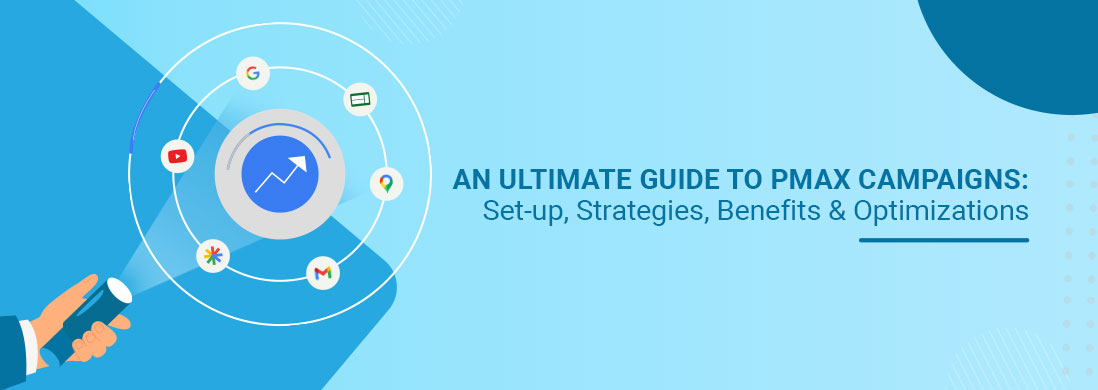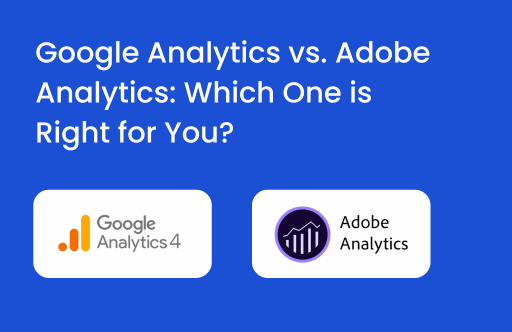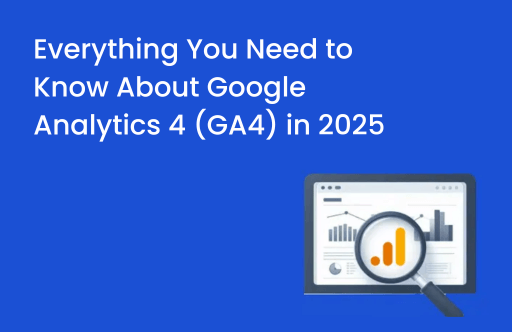What is the Pmax Campaign?
The Pmax Campaign also known as the Performance Max campaign was launched by Google last year in November 2021. The new goal-type campaign allows advertisers to access all types of inventory from one single campaign.
The new campaign type is designed to complement keyword-based search campaigns to help find converting customers across all Google channels like YouTube, display, search, discover, Gmail and Maps.
Pmax campaign helps in driving performance based on specified conversion goals, delivering more conversions and value by optimizing performance in real-time and across channels using Smart Bidding.
Performance Max combines Google’s automation technologies across bidding, budget optimization, audiences, creatives, attribution, and more. It is also empowered by advertising objectives and the creative assets, audience signals, and optional data feeds you provide.
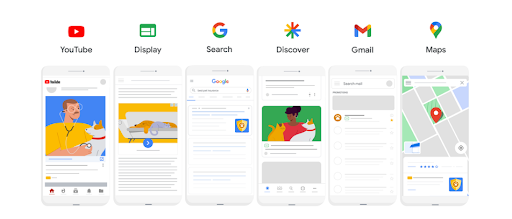
What are the benefits of Pmax Campaigns?
Benefits of Running Pmax Campaign are:
It is built with a high level of automation, process automation, digital assistants & robotic process automation.
Machine learning is automation in which algorithms analyze large sets of data.
Automation includes machine learning, process automation, digital assistants & robotic process automation. Pmax campaigns can take care of the bidding process on their own. This helps account managers save time & focus time on Pmax Campaign optimizations & strategy.
Pmax campaign has access to inventories of smart shopping & local campaigns. The Pmax campaign has taken priority over the smart shopping campaign.
As per the latest announcement from Google, the Pmax campaign has replaced the smart shopping & local campaign in 2022. Pmax campaign is similar to a smart shopping campaign but has high access to all inventories.
It is no longer necessary for advertisers to create separate campaigns and creatives for search, YouTube, display, and Gmail advertising.
Pmax campaign also enables advertisers to access the Google Discovery Feed & maps. It has further enabled me to reach the right audience set.
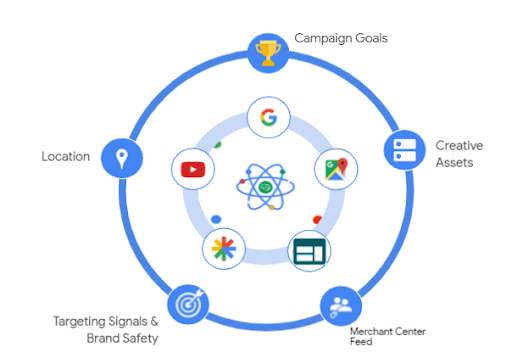
“Conversion-focused optimization” strategy
It involves using data to predict which message works best at converting visitors.
In that case, advertisers would like to optimize for conversions rather than clicks. If we wish to track only conversions (no clicks), you can use the Google Ads conversion tracking option when creating your PMax campaign.
The benefit is that advertisers won’t have to agonize over the campaign budget. Before setting up a manual campaign, we need to decide how much we want to spend and what type of bidding strategy we want to use.
After choosing these essential factors, we will need to check the ads’ performance. Advertisers can make adjustments throughout their lifespan.
With Performance Max, Google handles all this by itself. Automation also means that there’s no need for keyword research or audience creation, Google will do it all instead.
This new campaign type helps advertisers who already have busy schedules.
For one of our clients, the Pmax campaign has been the best-performing campaign type of all campaigns like search, display, discovery & video. The results were phenomenal. Search campaigns with exact-match keywords complement the Pmax campaign.
Month over month Lead Form Submission increased by more than 150%.
Campaigns were run specific to target locations as per client requirements and all locations received a good volume of leads.
Regular optimizations were performed to boost campaign performance like excluding irrelevant placements from the Pmax campaigns placement report, implementing new audience types, and changing ad copies based on performance at a regular interval.
Pmax helped us access new inventory and formats to capture greater awareness across new customers compared to Search, Display, and Discovery. It helped us reach both lower funnel strategies like search as well as upper funnel formats like display, discovery, and YT. It allows us to be visible to our customers at all points in the consumer journey not just at the bottom of the funnel.
Results were quick and impressive in just weeks. We saw a 10% increase in leads within a week while CPC improved by 81%. Equally striking were the conversion rates which increased substantially resulting in an over 94% improvement in CPL week over week.
What are the two types of Performance Max(Pmax) Bidding Strategies?
Two Types of Performance Max (Pmax) Bidding Strategies are:
1. Maximize Conversions –
Maximizing conversion bidding strategy will help to optimize campaigns towards conversions. This bid strategy provides the option of TCPA to maximize the conversion bidding strategy. Smart bidding will help to get as many conversions as possible at the TCPA in which it has been set up.
2. Maximize Conversion Value-
Maximize Conversion Value allows advertisers to optimize campaigns to values like sales revenue or profit margins. Google sets bids based on these targeting to drive the best possible results.
Other targeting options:
Ad Scheduling–
Ad scheduling can help to display ads or change bids at any time. We can create six ad schedules per day for each campaign in the account. The ads won’t run during the days & times that are not listed on the ad schedule.
It is important to include all the days & times we want our ads to be eligible to show.
Final URL Expansion–
By enabling the URL expansion feature, advertisers can increase campaigns’ ability to serve. The final URL may be replaced with the most relevant landing page from the final URL domain with relevant dynamic headlines based on customer intent.
Campaign URL options-
The tracking template is where we put all information related to tracking. When the ad is clicked the information is used to create a landing page URL.
Budget-
There is a charging limit for each campaign. The charging limit is the average daily budget that is multiplied by the average number of days in a month.
It is recommended for Pmax campaigns that it should be at least 3 times more than CPA or cost/conversion. Campaigns may spend up to two times more than the average daily budget on days the ads are likely to get more traffic.
Asset details –
Under asset groups, we can add up to 20 images, 5 logos, 5 videos, 5 headlines of 30 characters, 5 long headlines of 90 characters, 4 descriptions of 60 minimum & 90 maximum characters, and CTA & URL options.
Audience Signals –
Adding audience signals can help campaigns optimize as per selected campaign goals. Using audience signals can help accelerate & guide the machine learning models on the ideal way to optimize campaigns. This campaign type can show ads to relevant audiences outside of signals if there is a likelihood to convert & meet campaign goals.
Ad Strength-
Ad strength gives advertisers feedback on providing the right message to customers. It ranges from “incomplete”, “poor”, “average”, and “good” to “excellent”.
This will help in maximizing ad performance. This will help to improve the effectiveness of the ads.
Extensions-
Ad extensions give users more information about the business like site links, locations, prices & more. The extension page recommends ad extensions related to a set of goals.
What are the Steps for Performance Max Campaign Setup?
To set up Pmax campaigns, follow the below process:
- Sign in to your Google Ads account.
- In the page menu select campaigns
- Next, click on the plus button & select New Campaign
- Select the campaign objectives & if there are no objectives, select, and create a campaign without a goal
- Select the Pmax campaign as the campaign type.
- Enter the campaign name & continue.
- In the budget & bidding section select the average amount to be spent per day.
- Choose the type of bid strategy that is aligned with the campaign objective.
- Click on next to go to campaign settings.
- On the campaign, settings select the target location.
- Next, select Enter another location enter the name of the place to target, then select a target or exclude.
- Under language select the language in which ads will be served.
- To set ad scheduling, campaign start & end dates & URL settings, use the more settings options.
- Select asset groups, under each asset group, select a unique asset group name.
- Build asset group name by adding images, logo, videos, texts, CTA & URL options.
- Next, add extensions to give more business information.
- Finally, publish the campaign.
Finally, what we can agree on is:
Google Ads is the biggest search and digital marketing platform. The new PMax campaign with its cost-optimizing, richer media abilities is a compelling option for businesses. They can target online consumers at all stages – across devices and journeys.
Using the Smart Pmax Bidding Strategy, Pmax campaigns optimize performance in real time and across channels to deliver more conversions and value. Campaigns in Google Ads can be optimized to target a wider audience, improve performance, and reach more people.
Let us know if you want to know more about its Pmax campaigns and their benefits.
(Note: Connect with our digital media planning and buying solutions experts for your paid marketing campaigns.)

